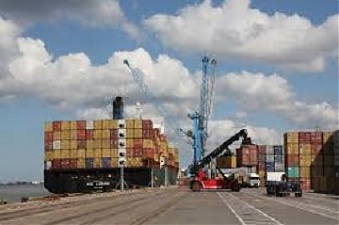Cargo, Containers, EU – Baltic States, Lithuania, Port, Transport
International Internet Magazine. Baltic States news & analytics
Sunday, 14.12.2025, 19:03
Lithuania's Port of Klaipeda plans to rival Gdansk on price alone
 Print version
Print version |
|---|
The reason being is that Mediterranean
Shipping Co (MSC) has added a port call at the Klaipedos Smelte terminal to its Australian Express and Indian
Ocean/East Africa Express Oceanic services, creating a competitor to Poland's
Gdansk port.
As a result shippers and forwarders will enjoy a 10 % reduction in tariffs
compared with shipping containers to/from Gdansk port.
Gdansk charges US$400 to $450 per TEU. Weighing costs an additional $110 to
$120. Although, these tariffs are lower than Russia's port of St Petersburg,
they are higher than Klaipedos Smelte,
which charges $350 to $400 per TEU, plus $100 for weighing.
Furthermore, Klaipedos Smelte will
offer lower tariffs on the busiest Baltic region routes. For example, the
Gdansk-Helsinki route by feeder ship costs $580 to $700 per TEU, while
Klaipeda-Helsinki costs $500 to $600 per TEU.
In addition, the Klaipeda-Helsinki route is 400 kilometres shorter than Gdansk
to Helsinki. Also, the tariff for the Klaipeda-Stockholm route is the same and
will be $100 to $150 lower than Gdansk-Stockholm.
Klaipedos Smelte general director Rimantas Yushka said that thanks to MSC
shippers will have an opportunity to export products directly to Spain and
Italy, the Middle East and the East African region, without overloading on
feeder vessels in western Europe.
Prior to Klaipedos Smelte, Gdansk was the only Baltic Sea container hub. Gdansk
has specialized in the distribution of container cargo from central Asia and
Asia Pacific, mainly by land transport across Europe as it is a base for Maersk
Line in the Baltic region.
Since there was a lack of suitable alternatives Gdansk has been able to dictate
conditions to shippers, forwarders and transport companies. It has been a
pivotal gatekeeper in the delivery of goods to central and north Europe and
Nordic countries.
Now that balance of power will change as Klaipedos
Smelte attracts Asia Pacific-northern European route shippers, with better
conditions and terms than Gdansk.
Currently, Klaipedos Smelte handles
4,700 TEU to 6,500 TEU ships but once Klaipedos
Smelte is expanded in 2019 it will be able to handle 13,000 TEU ships.
That improvement is due to a Swiss
Terminal Investment Ltd investment of $150 mln to expand and modernise
infrastructure. Part of that money will fund the Klaipedos Smelte expansion, dredging activities, the construction
of a 500-metre specialized pier and railway tracks.
Klaipedos Smelte services at present four to seven MSC ships per week and this
figure will likely rise in the coming months. The current estimated container
volume at Klaipedos Smelte is 40,000 to 45,000 TEU per month and that
will likely double to 80,000 TEU in 2019 - an increase enabled by the ongoing
terminal modernization.








 «The Baltic Course» Is Sold and Stays in Business!
«The Baltic Course» Is Sold and Stays in Business!

